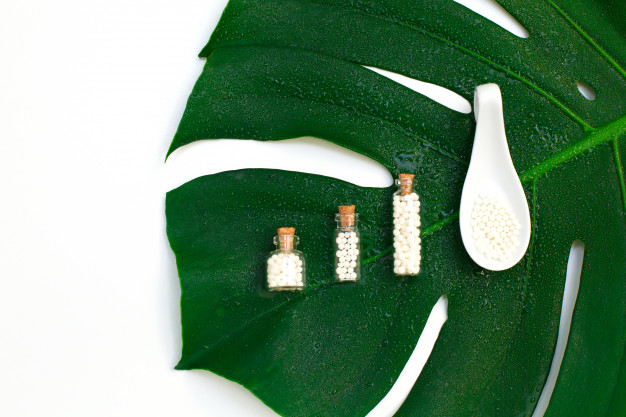Homeopathy, founded by German physician Dr. Samuel Hahnemann, came into existence in 1796 and in a short time, achieved its fame and glory because of the pivotal role it played in dangerous epidemics of scarlet fever, Typhus, Cholera, Flu and Plague. It were these successes that placed the practice of homeopathy so firmly in the consciousness of people worldwide. There is an interesting account of Dr. Joseph Pulte, who was one of the earliest homeopaths in Cincinnati. When he began his practice, he was not welcomed in town as he was a homeopath, to the extent that his house was pelted with eggs by the townsfolk. He was quite upset, frustrated and was thinking of leaving Cincinnati. While discussing this with his wife, she said, “Joseph, do you believe in the truth of Homoeopathy? He replied in affirmative. “Then, you will stay in Cincinnati”, she confidently replied. After pondering on this conversation with his wife, Dr. Pulte decided to stay in Cincinnati. Shortly after, when the Cholera epidemic swept through, Dr. Pulte was able to boast of not having lost a single patient–and looking at that he was gracefully accepted by the community. In the Epidemic of 1849, people crowded his clinic for treatment, lining up on the streets as the waiting room was full [1].
The law of similars is fundamental to the practice of homeopathy. This tenet states that a substance that causes a certain set of symptoms in a healthy person will have a curative effect when given in most minimum dose to a sick person who is displaying similar symptoms. Individualization is the pillar of the philosophical foundation of this holistic system. Each person is unique, and you need to study his symptoms at physical as well as emotional planes apart from the disease pathology.
There are three approaches to the management of Epidemics/Pandemics in Homoeopathy.
1. The gold standard in homeopathic practice is individualization. There is ample evidence of the effectiveness of individualized homeopathy for epidemic diseases. Trained homeopathic prescriber determines the specific remedy for each person, based on the Totality of Symptoms. Such indicated medicine has worked very well in acute diseases as well as in epidemics too, bringing rapid and gentle cure. For prevention of the disease, constitutional medicines prescribed helps to build up immunity; this is the age-old experience of the Homoeopathic fraternity. It works well in patients whose chronic constitutional medicine has been defined previously. What about Homoeopathic preventive at mass level? Founder Dr. Hahnemann answered in his book, Organon of Medicine which becomes the second approach to the epidemic management.
2. Genus epidemicus: The genus epidemicus is the remedy found to be most effective for a particular epidemic once data has been gathered from several cases. This concept was first put forth by Samuel Hahnemann in the Organon of Medicine, Aphorism 241. as There is evidence that homeopathy was successful during the H1N1 Spanish flu Pandemic of 1918 to 1919, which killed an estimated 50 million people worldwide, including 675,000 people in the United States alone [3]. According to the historian Julian Winston, the death rates for patients treated with homeopathy were 1 to 2% compared with a 30 % mortality for those where Homeopathy was not used. The genus epidemicus for the Spanish Flu, according to Winston, was Gelsemium [4]. Professor Mike Wallace, winner of the Pulitzer Prize for History, author of the book; “Greater Gotham: A History of New York City From 1898 to 1919,” gives account of “How New York Survived the Great Pandemic of 1918; Better than many cities, it turns out” and gives full credit to the homeopathic physician and city’s health commissioner, Dr. Royal S. Copeland for managing this sinister epidemic well so New York had lowest mortality rate compared to others. On 20/03/2020 New York Times revisited this area [5].
Homeopathy has been a boon to the patients of scarlet fever, typhus fever, yellow fever, Pneumonia, Cholera, Influenza, Hepatitis, Dengue, Leptospirosis and Conjunctivitis during the times of pandemics and epidemics. Examining annals of medical history, you can come across various illustrations. When Cholera struck Europe in 1831, Homoeopathic intervention brought down mortality rate from 40% to 9%, Austria saw Homeopathy’s remarkable contribution, “and on account of this extraordinary result, the law interdicting the practice of Homeopathy in Austria was repealed [1]. It is hard today to comprehend what kind of scourge such an epidemic was. As was seen in the later Flu Epidemic of 1918, one could be healthy in the morning and be dead by evening– it moved that rapidly. Exactly after a century, history repeats, and we are facing the severe pandemic of COVID 19!
Central Council for Research in Homoeopathy (CCRH) has been doing commendable work in researching epidemics. In the 2006 chikungunya epidemic, a homeopathic preventive Eupatorium 30C, was distributed to 1061 people with significant prevention (p < 0.0001). During the year 1999-2003, the government of Andhra Pradesh adopted Belladonna-Calcarea carbonica-Tuberculinum bovinum (BCT) regimen as preventive and the response was encouraging.
3. The third approach for Homoeopathic prophylactic is the use of nosode or Isopathic medicine. Isopathic remedies are made from the actual cause of the illness, or from its by-products, to treat that same condition. It is somewhat akin to conventional vaccination, although the preparation is made in the homeopathic manner of potentization, with repeated dilutions and shaking (succussion) at each step. The particular agent can be a nosode made from diseased tissues or bacteria or sarcode from healthy tissue. Cuba has elegantly utilized this aspect of Homoeopathy to control the epidemic of leptospirosis from 2007 to 2008. Caused by a gram-negative bacterium, leptospirosis is spread through the urine of domestic and wild animals and can cause serious infections such as meningitis, hepatitis, and pneumonitis. During a period of widespread flooding and increased incidence of leptospirosis in three provinces of Cuba in 2007, 97% of the entire population over 1 year of age was treated with the Homeopathic nosode that comprised four strains of inactivated Leptospira. Over a 5-week period, more than 2 million people received two oral doses of the 200C potency of this preparation. This was followed nearly a year later with two 10M doses of the same nosode. Disease surveillance statistics revealed an 84% decreased incidence of the disease in these provinces in 2008 compared with previous years, despite the occurrence of three large hurricanes. In contrast, the incidence of leptospirosis in the other, untreated, provinces of Cuba rose by 21.7%. The results from the 2007 and 2008 interventions were unambiguously successful in that the prevalence of leptospirosis was far lower than expected during the hurricane season in the 3 provinces where homeoprophylaxis was used (ie, in the intervened regions) compared with the remaining 12 provinces in Cuba (ie, rest of the country) [8]. The Cuban experience with homeoprophylaxis against leptospirosis has been and remains a very positive one. It has given rise to further government-directed immunization against hepatitis A, swine flu, pneumococcal disease, and dengue fever using homoeoprophylaxis. The Cuban health system in general demonstrates how conventional and complementary medicine can be usefully integrated, and their willingness to use both vaccination and homoeoprophylaxis as evidence-based immunization options is an excellent example of this. Lot of things to learn from Cuba, especially in the field of public health.
A prospective, multi-centre, data collection survey of homeopathic practice in the treatment of influenza-like illness was done in India during the 2009 pandemic of A/H1N1 influenza (‘Swine Flu’, S.F.). The authors surveyed the practice of homeopathic practitioners in India in the management of S.F. Twenty-three homoeopathic physicians contributed to data collection. I was one of the participants. The most frequently prescribed drug was Arsenicum album. and in 2012 through various camps conducted all over India by CCRH, Arsenic alb was confirmed as Genus epidemicus for Swine Flu [9].
Based on above experiences and correlating with prevailing COVID19 symptomatology, CCRH has declared ARSENIC ALB as genus epidemicus of current CORONAVIRUS epidemic. Lancet, Journals from China, WHO and Indian medical journals give us fair idea of symptoms and evolution of COVID 19. This study brings us to Phosphorus, China Ars and Camphor apart from Arsenic Alb. Bryonia, Gelsemium, Lycopodium and Zincum are other drugs indicated. These drugs may be considered depending on stages and its evaluation. Study from Homeopathic perspective is the need of the hour and will help immensely. There is strong case for large scale Homeopathic intervention in these times. Coronavirus disease COVID-19 is spreading across the globe as wild fire. We, in India are not spared from this furious pandemic. To successfully face it, all the healthcare systems should come together and work synergistically. Homeopaths with their humane approach, has good potential to work in public health. The government should utilize this and homoeopathy councils under the auspices of the Ministry of Ayush, should devise a P G course in Public health for Homoeopaths. Homoeopathic Research bodies should have proper collaboration with ICMR and other premier Institutes to move ahead cohesively. This is the era of collaboration, coordination, cooperation and cohesion and it is imperative that we deal with our egos and sensitivities to pave a successful path forward. Homeopaths should show respect and dedication to their science and not exploit the pandemic as an opportunity to earn and open shop for so-called preventive treatment.
There is strong historical evidence for Homeopathy’s application in Pandemic, hence it must consider now, as it has potential to reduce morbidity and mortality, while being cost effective and easily reproducible. Homeopathy is a time-tested two-century old empirical system of healing. Let us utilize it to its fullest extent in these crucial times.
Dr. Praful Barvalia, M.D.(HOM)
Hon. Director, Spandan Holistic Institute of Applied Homoeopathy, Mumbai
Member, Board Of Research, Maharashtra University Of Health Sciences
drpraful@gmail.com Phone: 9324404197
References:
(1). Some history of the treatment of epidemics with Homeopathy by Julian Winston: http://www.whale.to/v/winston.html
(2 Hahnemann S. Organon of Medicine. 6th ed. New Delhi: B Jain Publishers; 2004: 267
(3). Based on CDC data: The Centers for Disease Control and Prevention, the US agency https://www.cdc.gov/flu/pandemic-resources/1918-pandemic-h1n1.html
(4) Homeopathic Prevention and Management of Epidemic Diseases, Jennifer Jacobs, Homeopathy 2018; 107(03): 157-160 DOI: 10.1055/s-0038-1649487. https://www.thieme-connect.de/products/ejournals/html/10.1055/s-0038-1649487?issue=10.1055/s-009-43817#BR1700058-10
(5.) (New York Times, 20/03/2020 https://www.nytimes.com/2020/03/20/opinion/coronavirus-1918-flu-pandemic-new-york.html).
(6) Central Council For Research In Homoeopathy, EPIDEMICS- IMR PROJECT, CHIKUNGUNYA https://www.ccrhindia.nic.in//admnis/admin/showimg.aspx?ID=12813
(7)( Central Council For Research In Homoeopathy, EPIDEMICS- IMR PROJECT, JAPANESE ENCEPHALITIS (JE)/ ACUTE ENCEPHALITIS SYNDROME (AES) https://www.ccrhindia.nic.in//admnis/admin/showimg.aspx?ID=12813
(8) Large-scale application of highly-diluted bacteria for Leptospirosis epidemic control. Bracho G, Varela E, Fernández R. , et al. Homeopathy 2010; 99: 156-166 DOI: 10.1016/j.homp.2010.05.009 https://www.thieme-connect.com/products/ejournals/linkout/10.1055/s-0037-1609016/id/JR1700038-29?issue=10.1055/s-009-43817(9) (Homeopathic treatment of patients with influenza-like illness during the 2009 A/H1N1 influenza pandemic in India Robert T Mathie1, *, Elizabeth S Baitson1 , Joyce Frye2 , Chaturbhuja Nayak3 , Rajkumar K Manchanda3 and Peter Fisher4 Homeopathy, Volume 102, Issue 3, July 2013, Pages 187-192 http://dx.doi.org/10.1016/j.homp.2013.04.001 available online https://www.sciencedirect.com/


